Non-destructive test (NDT) and destructive tests (DT) are the the tests done one hardened concrete. Concrete is the oldest and most important construction material in the world. Testing of the concrete plays and important role to know about the strength, durability and condition of the structure. This article is about the types of Destructive and non destructive tests done on concrete.
Also read : Flow table test for workability of concrete
Also read : Concrete mixing objective and types
Types of concrete tests
Tests on hardened concrete are classified into two types.
- Non destructive tests (NDT)
- Destructive test (DT)
Non destructive tests and Destructive tests are done to determine the important properties of concrete like compressive strength, flexural strength, tensile strength etc.
Non- Destructive tests
The standard method of testing hardened concrete is by testing the concrete specimens cast simultaneously with structural concrete. These tests can determine the compressive, flexural, and tensile strengths. The major disadvantage of these tests is the non availability of immediate results. Moreover, the properties of the concrete specimen may differ from what it is in the actual structure. This difference is due to pouring conditions, curing factor, compaction and concrete density, etc. These tests come under the category of destructive tests (DT). Destructive testing destroys or changes the part in some way such that even if it passes the test it is no longer fit for service.
Non Destructive test is for determining compressive strength and other properties of concrete from existing structures or buildings. NDT does not destroy or change the part such that it is still fit for service if it passes the test. The non-destructive test determines the properties of concrete or structures without their destruction. Moreover, we can study its changes over time, The measurements are repeated many times and validate in detail, and gets immediate results.
Objectives of Non destructive test
- Quality check of the existing structure.
- For determining the homogeneity, internal and external characteristics of the concrete.
- To detect the cracks and voids of the concrete structures.
- Assess the quality of concrete with the standard requirement.
- To study the ageing of concrete.
- For finding the compressive strength of structures.
- Evaluation of elastic modulus
Classification of Non-Destructive test
Non destructive tests are the following types.
- Penetration Resistance Test
- Rebound Hammer Test
- Ultrasonic Pulse Velocity Test
- Pullout Test and Pull-off Test
- Concrete Core Testing
Penetration Resistance Test
The penetration resistance test is an NDT that determines the relative strength of the concrete structures. The Windsor probe is the equipment for conducting this test. This equipment includes of powder-actuates driver or gun, probes, loaded cartridges and a gauge that measures the penetration.
The penetration depth indicates the compressive strength of the concrete. However, this depends on the aggregate type and size. This test evaluates the poor quality and deterioration of concrete.
The major disadvantage of this test is getting variable results. Several probes are often shot to achieve a solid average depth for arriving a final conclusion. So we cannot determine the exact strength. But it is a quick method to evaluate the quality and maturity of concrete. Care should be taken to calibrate the instrument before taking readings.
Rebound Hammer Test
The rebound hammer is also known as Schmidt’s Hammer test. It determines the strength of concrete based on the hardness of the concrete surface. It is a surface hardness tester. The equipment consists of a spring-controlled plunger, a hammer that weighs 1.8 kg, and a graduated scale. By pressing the hammer on the concrete surface, the graduate scale measures the rebound number. A low rebound number means the concrete has low compressive strength and stiffness.
An accuracy of 15 to 20% is possible through this test. It is a simple and quick method. Also, the result relies on the surface smoothness, water content, type and size of aggregate and carbonation of the surface.
Ultrasonic Pulse Velocity Test
Ultrasonic pulse velocity test is another type of Non-destructive test. This test measures the time of travel of ultrasonic pulse waves for evaluating the concrete quality. The UPV test units consists of a pulse generator and pulse receiver. The frequency of the wave is 50-55 kHz. The pulse generator produces the pulses and is allowed to pass through the concrete. Then we calculate the velocity, by measuring the traversing distance and the time. Higher velocity means the concrete has a higher elastic modulus and density. It also determines the cracks and flaws in the structure. Large differences in pulse velocity values indicates a defective and deteriorated concrete.
For more details : Ultrasonic pulse velocity test || UPV Test – Methods and procedure
Pullout Test and Pull-off Test
The pullout test in concrete is done using the LOK test and CAPO test. It defines the strength of concrete by measuring the force to pull the embedded disc from the structure. This can be done for both fresh and hardened concrete. The pullout test equipment induces a pullout force toward the concrete. This pullout force is related to the concrete strength. The dimension of the ring, the orientation of the embedded insert, type of aggregate are some factors that influence this test. In addition, this test terminates the curing of concrete and measures the time for form removal.
Concrete Core Testing
The Concrete core testing is a non-destructive test of concrete. Concrete cores cut using a rotary cutting tool as shown in the fig. We get an uneven cylindrical core specimen. By testing this specimen in the compression testing machine in a moist condition, we get the strength. This sample also determines the density, depth of concrete carbonation, permeability, chemical analysis, etc.
Thus through Non-destructive test, it is possible to investigate the variation in concrete quality with time and external factors. When compared to other destructive test, there is no wastage of materials. Therefore, NDT is quick and most effective test of concrete.

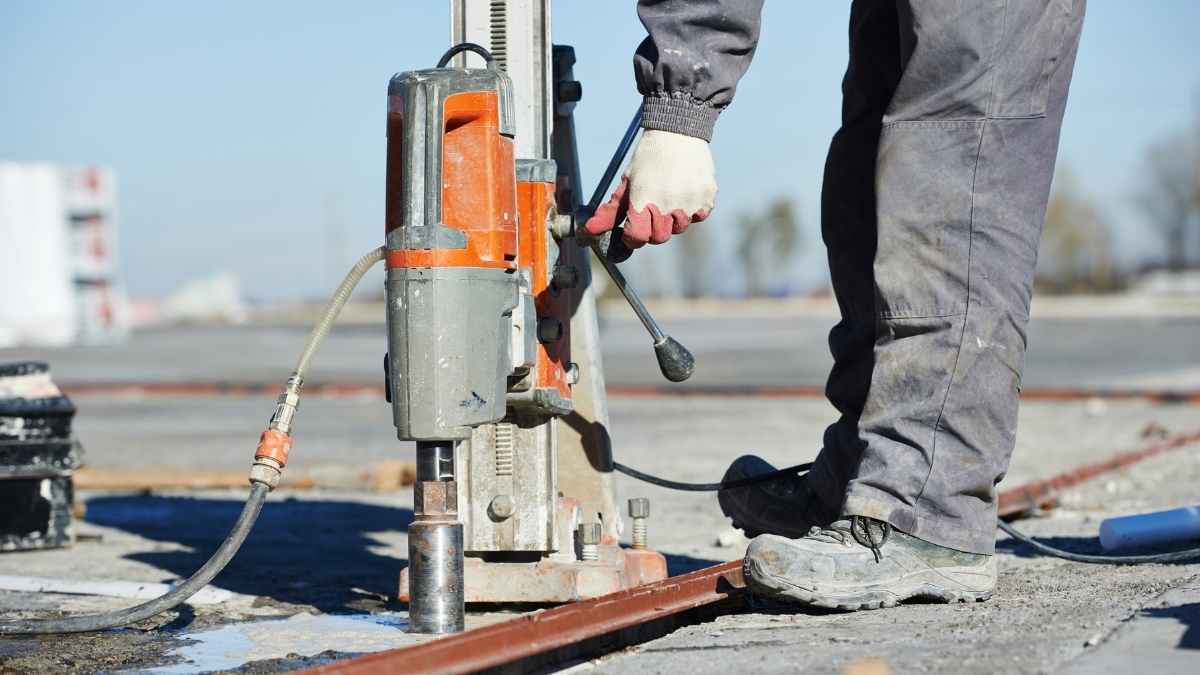
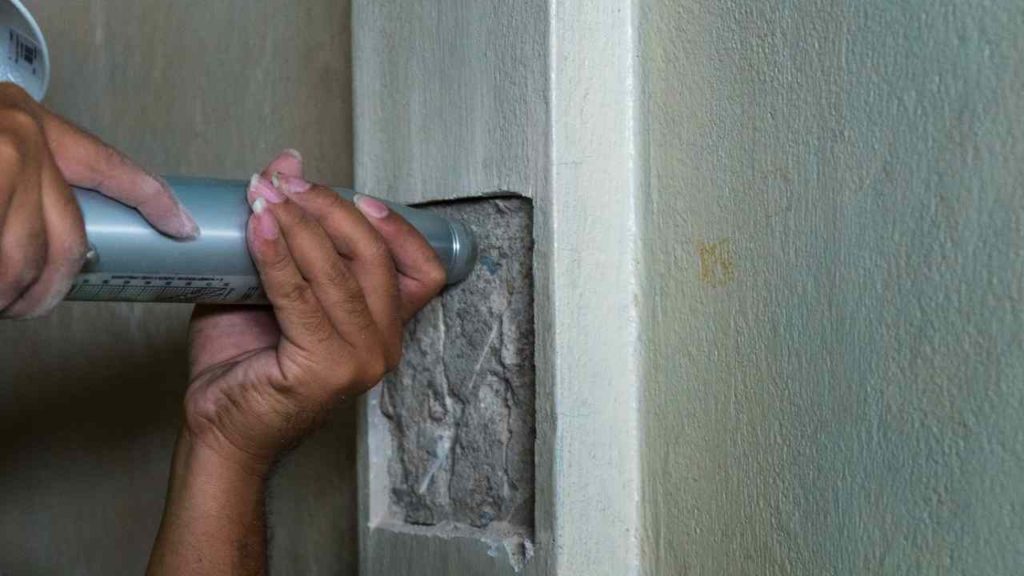
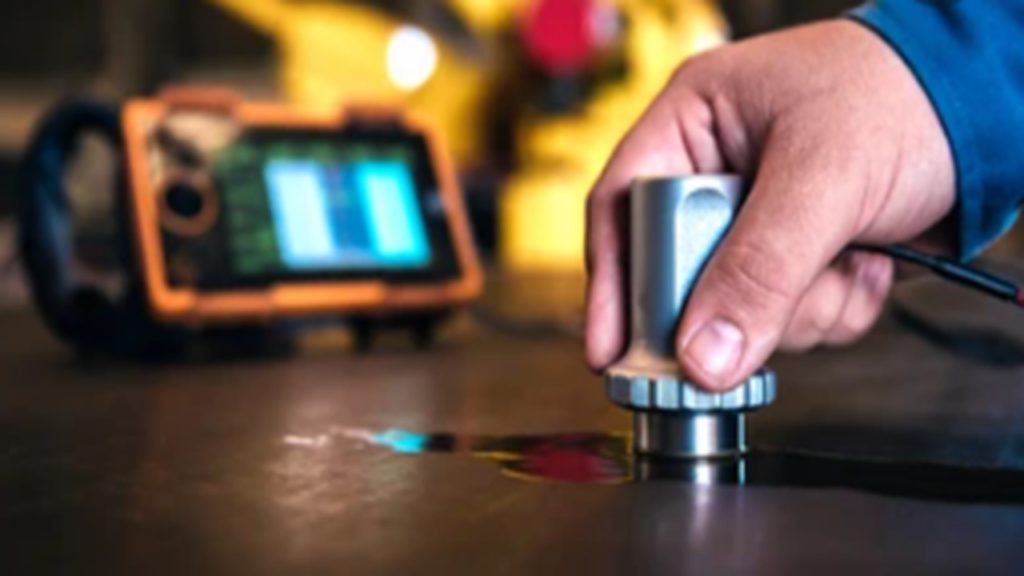
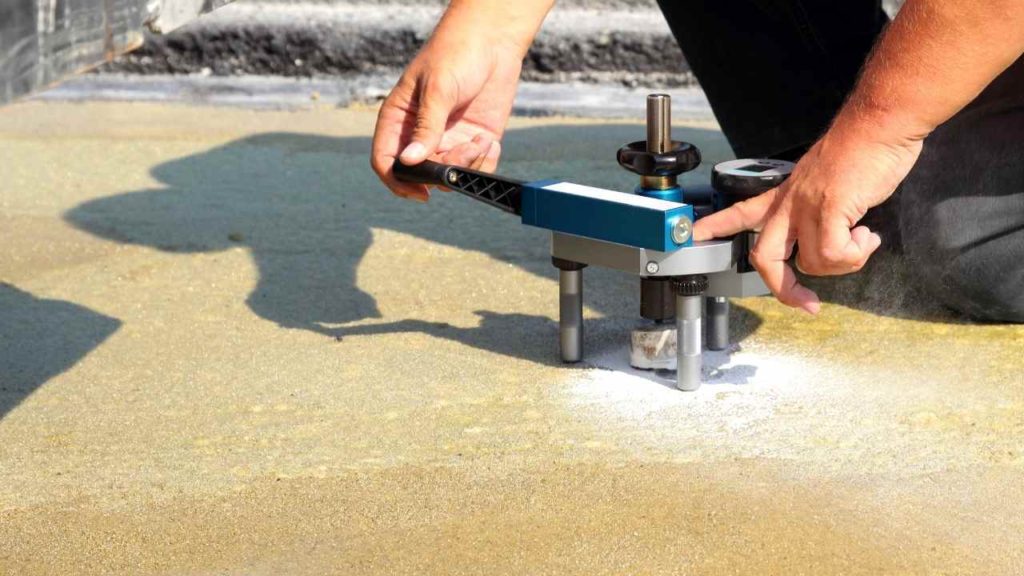
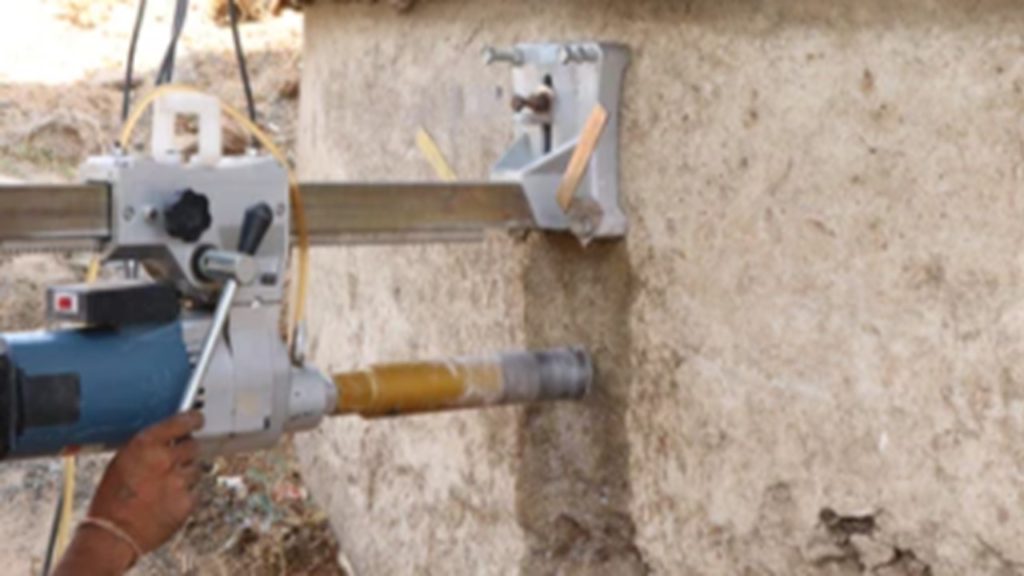
Comments are closed.